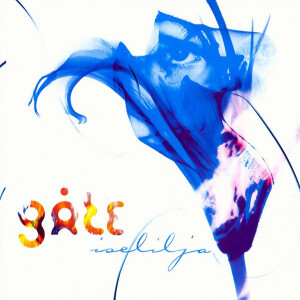 In 2003 I wrote that Gåte had taken folk rock into the 21st century with their first full length CD Jygri. After having sold more than 40,000 copies of that album and been awarded a platinum record in Norway for that achievement they are back with Iselilja, and I must say that it was with some hesitation I put it in my CD player. Would I be disappointed? I mean, often you find young groups and artists just copying a successful formula for their second album, and they seldom sound as fresh on the second one as on the first.
In 2003 I wrote that Gåte had taken folk rock into the 21st century with their first full length CD Jygri. After having sold more than 40,000 copies of that album and been awarded a platinum record in Norway for that achievement they are back with Iselilja, and I must say that it was with some hesitation I put it in my CD player. Would I be disappointed? I mean, often you find young groups and artists just copying a successful formula for their second album, and they seldom sound as fresh on the second one as on the first.
But I am happy to say that this time there is no reason for concern. Gåte has not only repeated the music they made on the first album, they have improved it. Iselilja is every bit as impressive as the debut.
The ingredients are the same. The core is made up of Norwegian folk songs, mostly narrative ballads, musically reworked by Gåte the same way Steeleye Span reworked their traditional material in the 1970s, in effect often fitting old words with new music. There are also three poems by Astrid Krogh Halse set to music by Gåte. Krogh Halse, now in her early 90s, writes in the traditional mode, and if you did not know you would probably mistake those lyrics for traditional. Then there is one instrumental by Sveinung Sundli and a song by someone called Knut Buen. Ten tracks in all.
These are all performed with a lot of energy, but still with a clever use of dynamics. The closing “Gjendines bnsull” is a perfect example of held-back energy. It is a lullaby played in a delicate fashion, appearing calm, but underneath that surface you can feel other things bubbling. Stretched out over 11 minutes, fading out and returning, it is a perfect end to the album.
The title is taken from “Knut liten and Sylvelin,” a long medieval ballad. “Iselilja” is part of the refrain. Almost six minutes long, it starts with Gunnhild Sundli’s voice on its own. Then it builds up, first with a frenetic guitar rhythm and some eerie keyboards sounds, after that drum rolls and soon you have the full power of Gåte in front of you. Another perfect example, this time on how to make 11 verses musically exciting.
But there are more goodies. “Du som er ung” is Nirvana-like, sometimes holding back while Gunnhild Sundli sings, at other times throwing screaming guitars and heavy drums at the listener. “Sjeren” on the other hand is soft, starting with piano and bass, before Sundli’s voice and the drums come in. In the background you get some guitar work which reminds me of what Robert Fripp did on “I Talk to the Wind” on King Crimson’s 1969 debut.
The only instrumental, “Ola 1,” by Sveinung Sundli, is heavy in every sense of the word. It mixes heavy guitar chords behind the fiddle carrying the tune with more rhythmic passages. And talking of rhythmic patterns, the guitar rhythms of “Kjaerleik” are more than intriguing. I have listened to the track a number of times without being able to grasp it fully.
I mentioned King Crimson earlier. Strange as it may seem I find a lot on this album to remind me of that group’s first offering, another jewel in my record collection. The drumming and the guitar work on the heavier passages especially sound like Gåte listened a lot to those masters of early progressive rock.
As you guess by now I like Iselilja very much. Gåte have succeeded in developing their own brand of music. If you are a folk purist you should stay well out of earshot, but if you like people using traditional music as a starting point and then pouring a great number of musical influences into a melting pot before finishing the product you should check Iselilja out. You will either love or hate it, and you know what my position is.
(Warner Finlandia, 2004)
